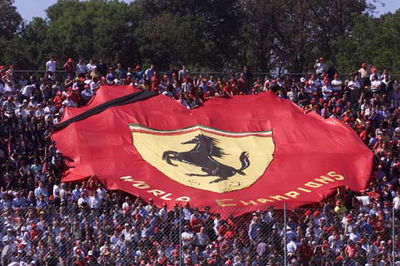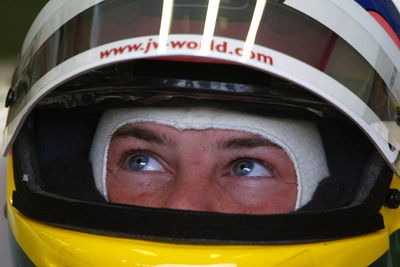Bridgestone takes last Euro lap on Ferrari turf.
Just a few days after leaving Italy following a four-day test, Bridgestone and its teams head back to the Monza circuit for the Italian Grand Prix.

Just a few days after leaving Italy following a four-day test, Bridgestone and its teams head back to the Monza circuit for the Italian Grand Prix.
The race is the last European round of the 2002 Formula One world championship, with only the United States and Japanese grands prix to go after Italy. Located within a royal park to the north-east of Milan, Monza is the fastest track on the Formula One calendar, following the reduction in fast straights at Hockenheim, with speeds in excess of 350kph. Full of history and passion, Monza remains a Mecca for motor-racing fans, not least Ferrari's loyal supporters, the tifosi, who will be out in force to welcome home their triumphant team.
"It is always a pleasure to go to Monza, which is a fitting place to end the European season," Bridgestone's director of motorsport, Hiroshi Yasukawa, said, "One cannot help but get caught up in the passion of the Italian fans who, once again, have a world champion team and driver to support."
Monza has a challenging mix of high speed straights, long corners and quick chicanes all of which demand a lot from engines, brakes, traction and tyres. The track surface, however, is relatively smooth.
"Once a driver has crossed the start-finish straight at Monza he gets very little relief from speed and braking," commented technical manager Hisao Suganuma, "Stability under braking into the corners, grip through the corners and good traction on the exit are normal requirements, but become particularly important at Monza. The cars are carrying very low downforce to give a speed advantage but, obviously, this can cause the car to slide through the corners. However, the most critical feature of this circuit from a tyre manufacturer's point of view is the demands it puts on the heat durability of the tyres."
Four of Bridgestone's five teams were in action last week at one of the biggest testing sessions of the year. The test confirmed the tyre specifications for this weekend's race and provided some useful information for future development.
"The tyres get hotter at Monza than at most tracks, because of the higher number of heat-generating revolutions they do," Suganuma continued, "Internally, they can reach temperatures as high as 180C while the surface of the tyres can get up to 140C.
"With the difficulties that heat can cause to tyres, we are looking for consistency in their performance as the temperature builds during a stint. Last week's test indicated that we needed to improve the heat durability of the tyres, so the choice of specifications for this race was influenced by those test results. The extra grip required from the tyres to lessen sliding during cornering means we cannot choose compounds that are too hard, but at least wear is not a huge problem because there are not so many corners."
The two dry weather specifications for Monza are new, both with a different construction designed especially for this circuit. The rain tyre range consists of two intermediates and one normal wet tyre.











